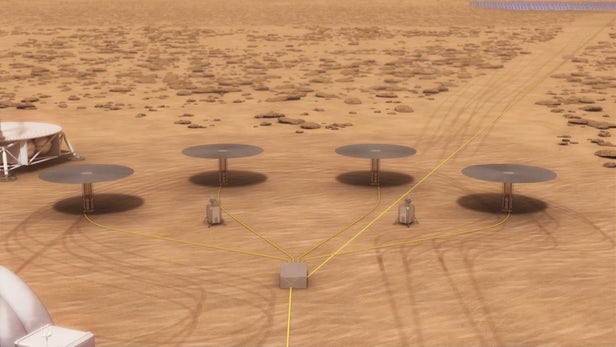
Breaking News
 Christmas Truce of 1914, World War I - For Sharing, For Peace
Christmas Truce of 1914, World War I - For Sharing, For Peace
 The Roots of Collectivist Thinking
The Roots of Collectivist Thinking
 What Would Happen if a Major Bank Collapsed Tomorrow?
What Would Happen if a Major Bank Collapsed Tomorrow?
Top Tech News
 Travel gadget promises to dry and iron your clothes – totally hands-free
Travel gadget promises to dry and iron your clothes – totally hands-free
 Perfect Aircrete, Kitchen Ingredients.
Perfect Aircrete, Kitchen Ingredients.
 Futuristic pixel-raising display lets you feel what's onscreen
Futuristic pixel-raising display lets you feel what's onscreen
 Cutting-Edge Facility Generates Pure Water and Hydrogen Fuel from Seawater for Mere Pennies
Cutting-Edge Facility Generates Pure Water and Hydrogen Fuel from Seawater for Mere Pennies
 This tiny dev board is packed with features for ambitious makers
This tiny dev board is packed with features for ambitious makers
 Scientists Discover Gel to Regrow Tooth Enamel
Scientists Discover Gel to Regrow Tooth Enamel
 Vitamin C and Dandelion Root Killing Cancer Cells -- as Former CDC Director Calls for COVID-19...
Vitamin C and Dandelion Root Killing Cancer Cells -- as Former CDC Director Calls for COVID-19...
 Galactic Brain: US firm plans space-based data centers, power grid to challenge China
Galactic Brain: US firm plans space-based data centers, power grid to challenge China
 A microbial cleanup for glyphosate just earned a patent. Here's why that matters
A microbial cleanup for glyphosate just earned a patent. Here's why that matters
 Japan Breaks Internet Speed Record with 5 Million Times Faster Data Transfer
Japan Breaks Internet Speed Record with 5 Million Times Faster Data Transfer
Mars and beyond: Modular nuclear reactors set to power next wave of deep space exploration

NASA is planning to put astronauts on Mars one day and since the Red Planet is about as off the grid as you can get, the space agency is developing a new generation of modular nuclear reactors to power manned outposts. Under funding from the Space Technology Mission Directorate (STMD), the Kilopower project is a multi-year effort to build simple, inexpensive reactors that can be used for a wide variety of planetary and deep space missions.
One of the primary problems with almost any space mission is how to provide it with power. Depending on the goal of the mission and its duration, there are any number of options. The very first satellites used batteries that supplied them with electricity for a few days. Soon, solar panels were added that extended the mission life to years. Fuel cells provided manned missions with not only power, but drinking water as well as hydrogen mingled with oxygen to create electricity and a potable waste product.
Unfortunately, all of these options turned out to be very limited in application. The most successful of them, solar power, only works when sunlight of sufficient brightness shines on the panels. This means that it's a system largely confined to the inner Solar System with Jupiter as the extreme limit, doesn't provide much in the way or power density, is bulky, and is useless at night or on planetary surfaces that may be obscured by dust and clouds.

 The State's Last Stand
The State's Last Stand


